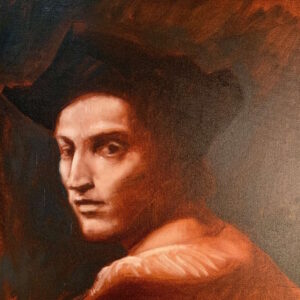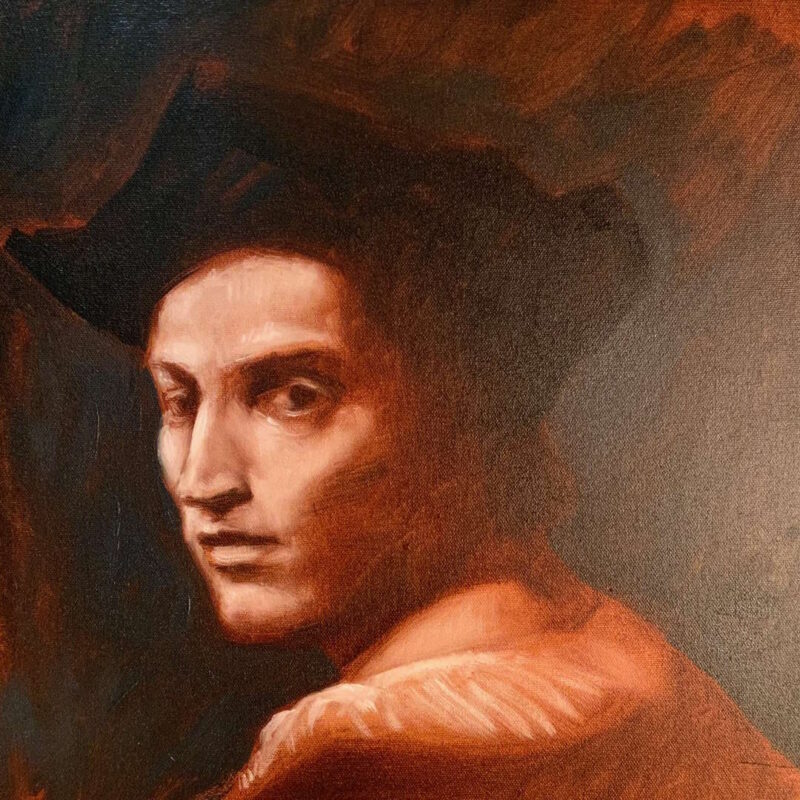ROBERTO OSTI
The Portrait in Oil, Theory and Practice

$250.00
Monday, 04/17/2023 - 05/22/2023
9:30 AM - 12:30 PM EST
Number of Lessons: 6
This is the third oil painting course of the foundation series dedicated to the portrait. It is not necessary having attended the previous oil portrait foundation courses to sign up for this one.
In the six-three-hour oil painting sessions of this course we will paint few portraits from photographic references and Masters’ works, privileging focusing on the method and technique and bringing each work to a finish, refining the painting technique and the quality of the final result.
We will paint using both the direct painting technique, used by the impressionists, and the indirect painting technique, typical of the Old Masters. We will also practice painting with the limited palette, a fundamental method that permits to understand how to use chroma, temperature, value, tint and tone when painting. We will also practice color mixing, color blending and color theory.
The participants of the course, will also be encouraged to work on an independent project: a portrait of a subject of their choice, a good way to start making personal aesthetic and technical choices, and put to work the notions discussed and practiced in class. Composition, color mixing, paint handling, materials, color theory and the techniques employed by a few masters, are some of the topics, among others, that will be discussed and practiced.
Open to all levels.
Materials
Paint: alizarine crimson, cadmium red medium ultramarine blue, cobalt blue cadmium
- yellow lemon, cadmium yellow, yellow ochre, burnt sienna, burnt umber, black, white.
- A wooden, plastic, or disposable palette. If you buy a wooden palette, make sure it is treated with a few layers of linseed oil to prevent the untreated wood to soak up the oil from the paint. I can show you how to do this in class, but you’ll need a disposable or plastic palette for the first class.
- A variety of brushes: hog and synthetic will do; Filbert or bright, #2, 6, 8, and 12 will do. You will also need a few round, synthetic brushes, #2 and 4. You can also use the colors that you already have and we will discuss about these materials in class.
- Linseed oil (refined linseed oil will suffice), Galkid or Liquin, Turpenoid or other low odor solvent
- Rags or paper towels.
- A metal cup for the medium and a palette knife.
- Canvas or canvas boards size 20”by 16”, or so.
(Painting by Sir Frederic Leighton)
Availability of Courses' Recordings
As part of the services offered by the New Renaissance Atelier, you will have access to the recordings of the video sessions of all the courses you purchased for one year.
You will find the links to the videos in your Personal Video Library that has been set up specifically for you.
Please keep this Video library link on your desktop or in your browser for easy access.
In case You missed a course You are interested in, You can purchase the recording of the video sessions, by clicking on the menu above

